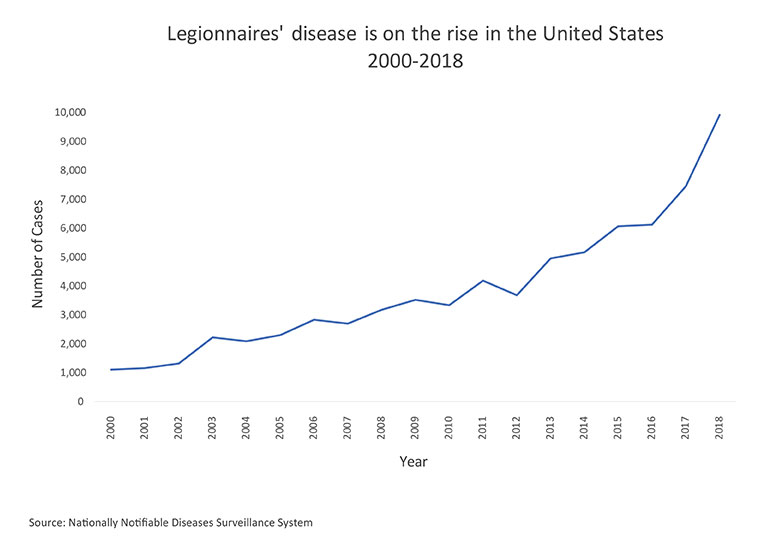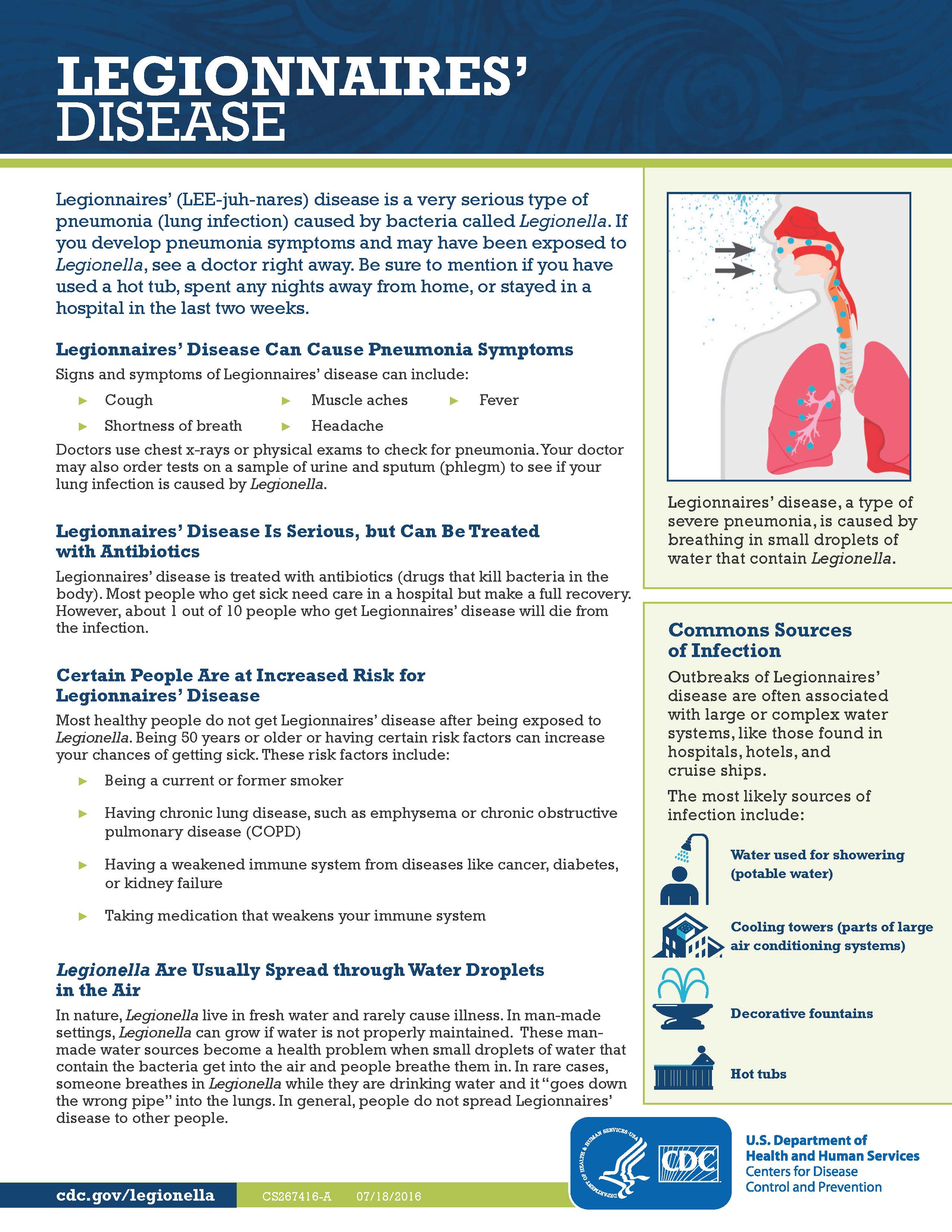Legionnaires' Disease
What You Need to Know
Legionnaires' disease is a serious type of pneumonia caused by Legionella bacteria. People can get Legionnaires' disease by breathing in mist or accidentally swallowing water into the lungs that contain these bacteria. Legionella bacteria are found naturally in freshwater environments, but become a human health concern when they grow and spread in large building water systems. The number of cases of Legionnaires' disease reported in both the US and Montana has increased over the past two decades.
People who have Legionnaires' disease have commonly been exposed to the bacteria by one of the following sources:
- Shower heads and sink faucets
- Cooling towers (structures that contain water and a fan as part of a centralized air cooling system)
- Hot tubs
- Decorative fountains and water features
- Hot water tanks and heaters
- Large plumbing systems
Symptoms typically begin 2 to 10 days after exposure to the bacteria, but it can be up to two weeks in some cases. Common signs and symptoms of Legionnaires' disease include:
- Cough
- Shortness of breath
- Fever
- Muscle aches
- Headaches
Most healthy people exposed to Legionella do not get sick. People at increased risk of getting sick are:
- People 50 years or older
- Current or former smokers
- People with a chronic lung disease (like chronic obstructive pulmonary disease or emphysema)
- People with weak immune systems or who take drugs that weaken the immune system (like after a transplant operation or chemotherapy)
- People with cancer
- People with underlying illnesses such as diabetes, kidney failure, or liver failure
The best way to prevent illness occurring from Legionella is to make sure building owners and managers develop, implement, and maintain a water management program.
- Maintaining water temperatures outside the ideal range for Legionella growth (the bacteria survive at temperatures between 68 and 140 degrees Fahrenheit)
- Preventing water stagnation
- Ensuring adequate disinfection
- Maintaining devices to prevent scale, corrosion, and biofilm growth, all of which provide a habitat and nutrients for Legionella
CDC has developed a toolkit focused on large water systems to help people understand what type of buildings need a Legionella water management program, and how to develop it.
- CDC Water Management Program Toolkit
- CDC Legionella webpage
- Occupational resources can be found on the OSHA webpage
Prevalence in U.S.

Health departments reported nearly 10,000 cases of Legionnaires’ disease in the United States in 2018. However, because Legionnaires’ disease is likely underdiagnosed, this number may underestimate the true incidence. A recent study estimated that the true number of Legionnaires’ disease cases may be 1.8–2.7 times higher than what is reported.
FAQS
A: Testing the water system for Legionella is not a requirement in healthcare facilities. The Centers for Medicare and Medicaid Services (CMS) issued a directive requiring all Medicare certified healthcare facilities to have a water management plan designed to reduce the risk of growth and spread of Legionella, but environmental testing is not part of that requirement. The CMS requirement references the CDC Toolkit to assist with designing a water management plan. More information on Legionella can be found on the CDC website. If you are a facility needing information, please review the resources above and contact your local health department for more information.
A. There are many things to consider before pursuing testing water for the presence of Legionella bacteria. For example, environmental testing can be costly, a negative test is not always reliable, and a positive test may have no relationship to illness. However, there are some scenarios when testing could be beneficial. Environmental testing can be used during outbreaks to determine the extent of Legionella colonization. It can also be used to verify that remediation activities are working, if both baseline and post-remediation samples are taken. The decision to collect environmental samples for Legionella should be made carefully, after consulting with your local health department.


